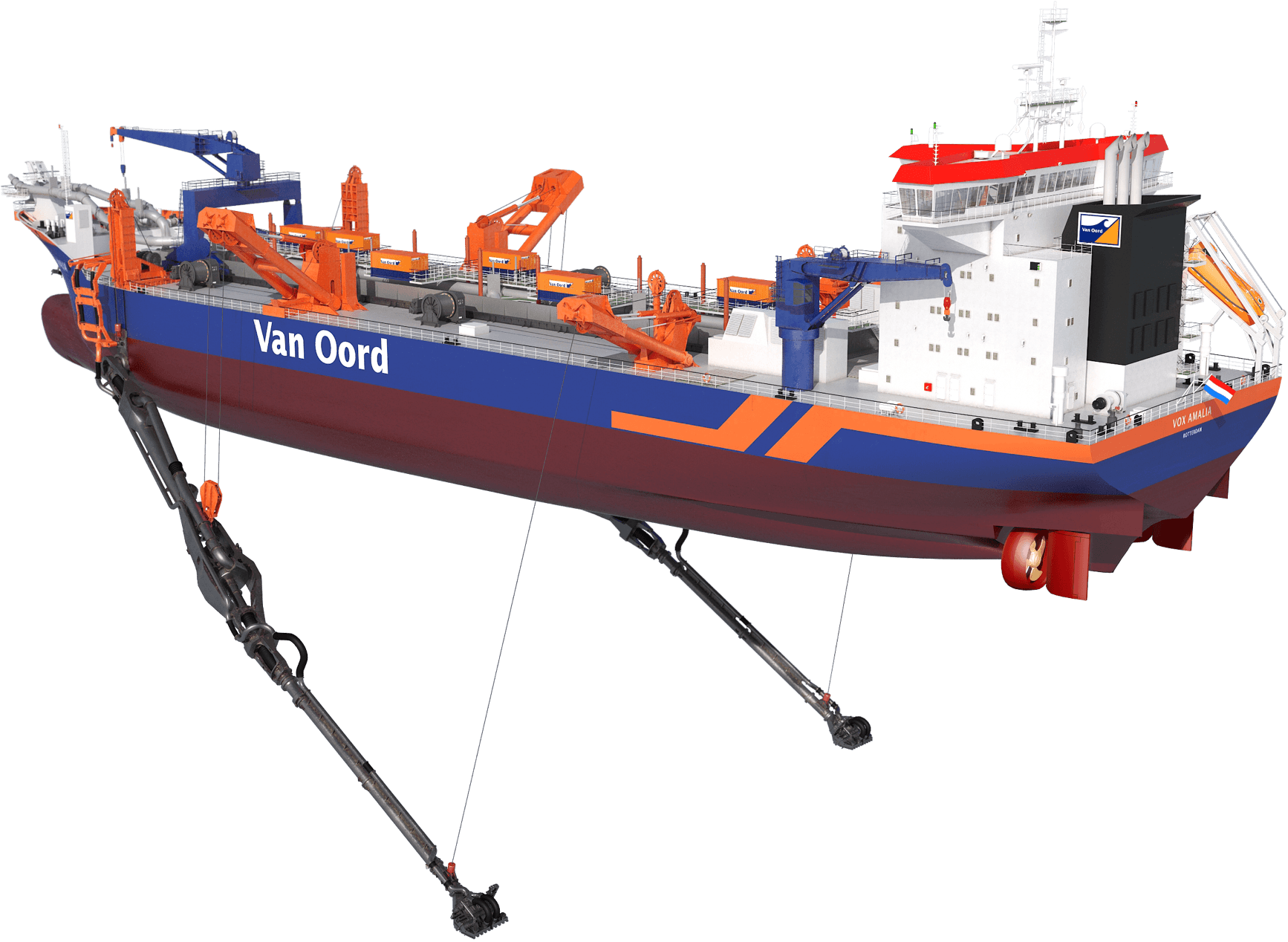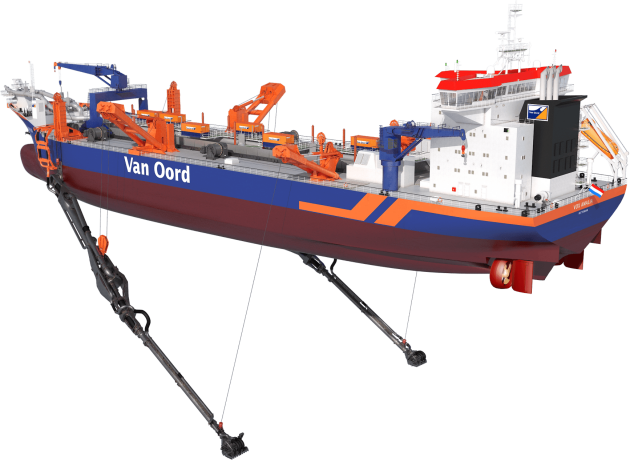Equipment
Nine ways in
which our fleet is becoming more energy efficient
Our vessels are not only bright blue and orange, they are also becoming greener by the day. Find out how new technology and working methods are improving the energy efficiency of our fleet.



Various dashboards make data visible and provide our crew with valuable insights. This allows us to draw the right conclusions, we can act immediately and optimise working methods.
Dashboards
Bigger vessels are the trend. Often goes: the larger the vessel, the lower the cubic price. However, our vessels cannot be too big. They still have to manoeuvre in all sorts of (tight) spaces. We always look for the optimal dimensions to be able to use our equipment as efficiently as possible.
Economy of scale
We control the power management from one central location. If the dredging process needs more energy, you can take that energy from the propulsion for example. This way, the powertrain delivers continuous power and runs optimally.
Power management
Systems are becoming increasingly connected. As a result, production optimisation and fuel minimisation go hand in hand. Also, remote support is enabled in a more efficient way. System integration makes it possible to operate the vessel entirely from one location.
System integration
Our in-house developed Van Oord Dredging Automation System (VODAS) ensures that the production process is (partly) automated. It makes the equipment more efficient. For example, we add the lowest amount of water to sand to obtain exactly the correct density. An optimal mix of ingredients leads to the highest production and lowest fuel consumption. Now that's what you call efficiency!
VODAS
Selective Catalytic Reduction technology (SCR) and a Diesel Particulate Filter (DPF) will clean the exhaust gases from harmful pollutants.
Cleaning exhaust gases
Diesel engines produce heat that we can reuse smartly. Apart from heating accommodation we can also convert waste heat to electricity. This way we obtain more useful energy from a litre of fuel. However, we can also use cold. LNG, for example, has a low temperature of -164º C, which can be used for the air conditioning.
Using cold/heat
Nowadays, there are many different fuels: Marine Gas Oil (MGO), Heavy Fuel Oil (HFO) and Liquid Natural Gas (LNG) to name but a few. Dual fuel vessels, such as Vox Ariane and Werkendam, run on two different types of fuel. Whatever the fuel of the future, our vessels will be ready for it.
Dual fuel
Our new vessels will be built with a modular powerplant. This allows us to benefit from future technology and to adapt to other types of fuel. This flexibility ensures that our vessels last longer economically and maintain sustainable and efficient.
Flexible powertrain


Our vessels are not only bright blue and orange, they are also becoming greener by the day. Find out how new technology and working methods are improving the energy efficiency of our fleet.
Nine ways in
which our fleet is becoming more energy efficient
Equipment



